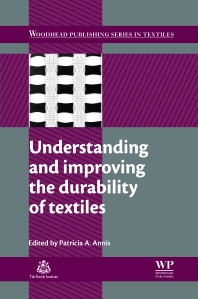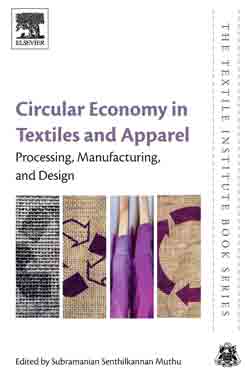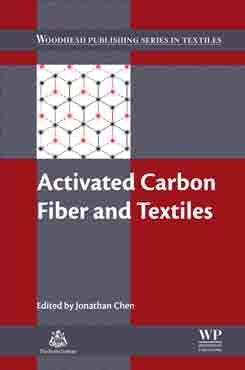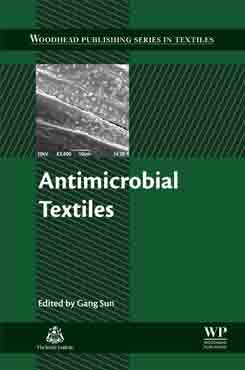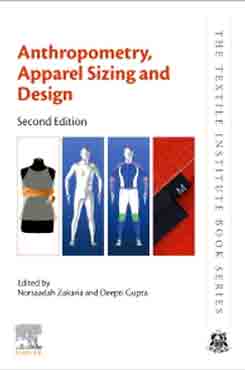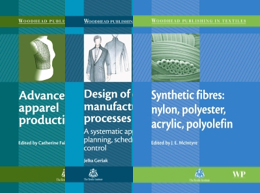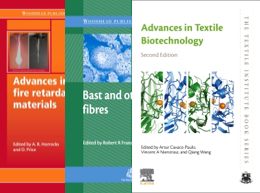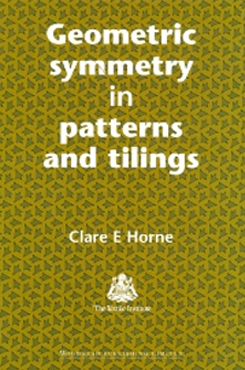Description
The ability of a fabric to resist wear is an essential aspect of its performance. Understanding and improving the durability of textiles provides a comprehensive guide to the factors affecting the durability of a range of different textiles.
Part one addresses the different factors that affect textile durability, including the influence of fabric construction and fibre type, as well as properties affecting strength and dimensional stability. Colour fastness and the effects of light are discussed, along with methods for testing and improving wrinkle-resistance and textile durability.
Part two goes on to explore the durability of particular types of textile including antimicrobial textiles, protective clothing, historic textiles, silk and geotextiles. With its distinguished editor and international team of expert contributors, Understanding and improving the durability of textiles is an indispensable book for textile scientists, technologists, engineers and those designing, testing and manufacturing textiles. It also provides a comprehensive guide to textile durability for researchers and academics of all levels in this sector.
Key Features
- Provides a comprehensive guide to the factors affecting the durability of a range of different textiles
- Discusses colour fastness and the effects of light, and methods for testing and improving wrinkle-resistance and textile durability
- Explores the durability of particular types of textile
Readership
Table of Contents
- Part I: Aspects of textile durability
Chapter 1: The influence of fabric construction and fibre type on textile durability: woven, knitted and nonwoven fabrics
Abstract:
1.1 Introduction
1.2 Woven, knitted and nonwoven fabric structures
1.3 Fibre and yarn properties that affect fabric durability
1.4 Durability of woven, knitted and nonwoven fabric structures
1.5 Durability of technical textiles: medical and breathable textiles
1.6 Future trends
1.7 Sources of further information and advice
1.8 Acknowledgement
Chapter 2: Strength properties of fabrics: understanding, testing and enhancing fabric strength
Abstract:
2.1 Introduction
2.2 Principles of fabric strength and its influence on durability
2.3 Methods for testing fabric strength
2.4 Factors affecting fabric strength
2.5 Approaches to enhance fabric strength
2.6 Examples of durable textiles
2.7 Future trends
Chapter 3: Dimensional stability of fabrics: resistance to shrinkage and other dimensional changes
Abstract:
3.1 Introduction
3.2 Types of shrinkage
3.3 Treatments to maximise dimensional stability in fabrics
3.4 Case study: minimising shrinkage in knitted fabrics
3.5 Future trends
Chapter 4: Durable press treatments to improve the durability and wrinkle resistance of cotton and other fabrics
Abstract:
4.1 Introduction
4.2 Development of durable press reagents
4.3 Properties affected by durable press treatments and other methods to improve durability
4.4 Recent developments and future trends
Chapter 5: Colour fastness
Abstract:
5.1 Introduction
5.2 Principles of colour fastness
5.3 Colour fastness and dye-fibre system mechanism
5.4 Testing colour fastness
5.5 Applications and examples of colour fastness tests
5.6 Future trends
5.7 Sources of further information and advice
Chapter 6: Effects of light exposure on textile durability
Abstract:
6.1 Introduction
6.2 The influence of sunlight on natural fibres
6.3 The influence of sunlight on synthetic and high performance textiles
6.4 The process of photochemical destruction of textile materials
6.5 Assessing the durability of textiles to light exposure
6.6 Methods for improving the durability of textiles exposed to light
6.7 Future trends
Chapter 7: Testing textile durability
Abstract:
7.1 Introduction
7.2 Durability in textiles
7.3 Textile test methods
7.4 Testing strength and abrasion resistance
7.5 Testing for color loss in use
7.6 Testing the effects of laundering on fabric properties
7.7 Conclusions
Part II: Durability of particular types of textiles
Chapter 8: Durable antimicrobial textiles: types, finishes and applications
Abstract:
8.1 Introduction
8.2 Microbial degradation of natural fibers
8.3 Microbial degradation of synthetic fibers
8.4 Antimicrobial treatments for textiles
8.5 Applications of antimicrobial finishes: the example of medical textiles
8.6 Future trends and conclusions
8.7 Sources of further information and advice
Chapter 9: Durability of protective clothing
Abstract:
9.1 Introduction
9.2 Testing the durability of protective clothing
9.3 Other factors that can affect the durability of protective clothing
9.4 Future trends and conclusions
Chapter 10: Durability of historic textiles
Abstract:
10.1 Introduction
10.2 Main durability issues that affect historic textiles
10.3 Durability of different fibres and fabrics
10.4 Physical context, environment and storage conditions
10.5 Conservation of historic textiles
10.6 Case studies of historic textiles
10.7 Conclusion
Chapter 11: Silk durability and degradation
Abstract:
11.1 Introduction
11.2 Key issues for silk durability
11.3 Deterioration of silk
11.4 Methods to improve the durability of silk
11.5 The impact of treatments to improve the durability of silk
11.6 Future trends
11.7 Sources of further information and advice
Chapter 12: Durable geotextiles
Abstract:
12.1 Introduction
12.2 Durability of nonwoven geotextiles in chemical and waste leachate solutions
12.3 Protection performance of nonwoven geotextiles in waste landfill
12.4 Weatherability of woven geotextiles for soft ground improvement
12.5 Durability of nonwoven geotextiles in simulated seawater solution
12.6 Conclusions
Index
